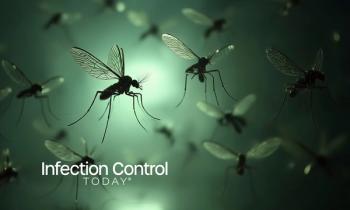
Novel Nanoparticle Therapy Promotes Wound Healing
An experimental therapy developed by researchers at Albert Einstein College of Medicine of Yeshiva University cut in half the time it takes to heal wounds compared to no treatment at all. Details of the therapy, which was successfully tested in mice, were published online in the Journal of Investigative Dermatology.
Imaging of burns indicates that those treated with the FL2 inhibitor nanotechnology experienced collagen deposition and hair follicle formation. (2-photo confocal microscopy). Image courtesy of Vera DesMarais/Albert Einstein College of Medicine
An experimental therapy developed by researchers at Albert Einstein College of Medicine of Yeshiva University cut in half the time it takes to heal wounds compared to no treatment at all. Details of the therapy, which was successfully tested in mice, were published online in the Journal of Investigative Dermatology.
"We envision that our nanoparticle therapy could be used to speed the healing of all sorts of wounds, including everyday cuts and burns, surgical incisions, and chronic skin ulcers, which are a particular problem in the elderly and people with diabetes," says study co-leader David J. Sharp, PhD, professor of physiology & biophysics at Einstein.
Sharp and his colleagues had earlier discovered that an enzyme called fidgetin-like 2 (FL2) puts the brakes on skin cells as they migrate towards wounds to heal them. They reasoned that the healing cells could reach their destination faster if their levels of FL2 could be reduced. So they developed a drug that inactivates the gene that makes FL2 and then put the drug in tiny gel capsules called nanoparticles and applied the nanoparticles to wounds on mice. The treated wounds healed much faster than untreated wounds.
FL2 belongs to the fidgetin family of enzymes, which play varying roles in cellular development and function. To learn more about FL2's role in humans, Sharp suppressed FL2's activity in human cells in tissue culture. When those cells were placed on a standard wound assay (for measuring properties like cell migration and proliferation), they moved unusually fast. "This suggested that if we could find a way to target FL2 in humans, we might have a new way to promote wound healing," says Sharp.
Sharp and project co-leader Joshua Nosanchuk, MD, professor of medicine at Einstein and attending physician, infectious diseases at Montefiore Medical Center, developed a wound-healing therapy that uses molecules of silencing RNA (siRNAs) specific for FL2. The siRNAs act to silence genes. They do so by binding to a gene's messenger RNA (mRNA), preventing the mRNA from being translated into proteins (in this case, the enzyme FL2). However, "siRNAs on their own won't be effectively taken up by cells, particularly inside a living organism" says Sharp. "They will be quickly degraded unless they are put into some kind of delivery vehicle."
To find a way to deliver siRNAs for curbing FL2, Sharp collaborated with Joel Friedman, MD, PhD, professor of physiology and biophysics and of medicine at Einstein, and study co-leader Adam Friedman, MD, director of dermatologic research at Einstein and Montefiore, who together had developed nanoparticles that protect molecules such as siRNA from being degraded as they ferry the molecules to their intended targets.
The nanoparticles with their siRNA cargoes were then tested by topically applying them to mice with either skin excisions or burns. In both cases, the wounds closed more than twice as fast as in untreated controls. "Not only did the cells move into the wounds faster, but they knew what to do when they got there," says Sharp. "We saw normal, well-orchestrated regeneration of tissue, including hair follicles and the skin's supportive collagen network."
Sharp plans to start testing the therapy on pigs, whose skin closely resembles that of humans, within months.
The paper, which published online March 10, is titled "Fidgetin-like 2: a novel microtubule-based regulator of wound healing."
David Sharp and Rabab Charafeddine are co-inventors on U.S. Patent #20130022667, "Fidgetin-like 2 as a target to enhance wound healing," which has been licensed by MicroCures Inc.Sharp is currently chief scientific officer of MicroCures. Sharp, Friedman, Nosanchuk all have equity in the company.
Source: Albert Einstein College of Medicine
Newsletter
Stay prepared and protected with Infection Control Today's newsletter, delivering essential updates, best practices, and expert insights for infection preventionists.





